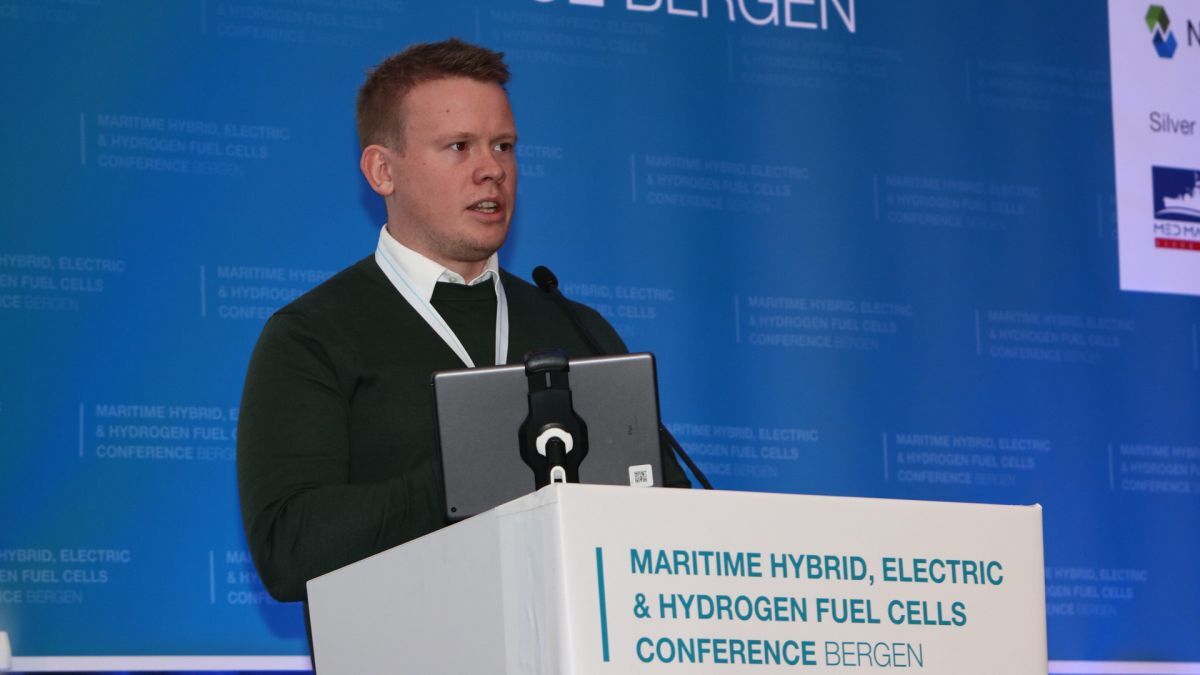Environmental regulations, access to investors and rising demand from clients is pushing the maritime industry towards ordering ships running on green fuels and batteries
Almost 270 vessels expected to run on fuels other than diesel or very low sulphur fuel oil (VLSFO) were ordered H1 2022, delegates heard at Riviera Maritime Media’s annual Maritime Hybrid, Electric & Hydrogen Fuel Cells Conference in Bergen, Norway.
This represents about 60% of the global shipyard orderbook of all ships not running on VLSFO and diesel alone, demonstrating significant progress this year by the maritime industry to reduce emissions, said Saga Pure vice president for maritime opportunities Jørgen Kopperstad.
But this orderbook is just 6% of the total global shipyard orderbook of all ships under construction to 2026, indicating most will still be running on conventional fuels in the future, he said.
There are more than 660 vessels operating, and on order, with batteries in 2022, up from under 300 in 2019 and around 100 in 2016, showing there has been considerable growth in this market.
At the conference, DNV’s business development manager North Europe, Anders Mikkelsen said most ships use VLSFO and diesel because of their abundance for bunkering, high energy density and lower onboard storage volumes compared with alternative fuels.
LNG and LPG need 1.5-2 times more onboard storage than VLSFO, while methanol needs 2.5 more onboard storage, ammonia would need 3-4 times more and compressed or liquid hydrogen 6-10 times more storage.
Which is why most shipowners are considering LNG, methanol and ammonia for future newbuilding projects.
IMO is considering changing regulations and class are updating rules to facilitate using LNG, methanol and ammonia as fuels. IMO’s regulations for LNG came into force in 2017, said Mr Mikkelsen, who expects regulatory changes to be in force for methanol and ammonia from around 2028.
The benefits of methanol as a fuel were explained by e1 Marine managing director Robert Schluter, who is behind the Hydrogen One methanol-fuelled towboat project in the US.
He said it is the “missing link” between conventional fuels and zero emissions, as it is a transportable liquid hydrogen carrier, which can be fed into converters and then fuel cells on board vessels.
“Methanol is an available, low-carbon fuel with reduced safety risks, low costs and no high-pressure processing,” Mr Schluter said.
For the project e1 Marine is working on with Maritime Partners in the US, methanol will be mixed with water on board Hydrogen One, raising the fuel density and reducing the storage volume needed by as much as 50%.
Port of Trelleborg’s head of environment and sustainability Jennie Folkunger provided an overview of what the Swedish harbour is doing to cut emissions.
“We put the port environment at the forefront with a large solar park and we are installing two wind turbines,” she said. Port of Trelleborg aims to be net zero on carbon emissions by 2030.
Part of this strategy is to facilitate its main clients, Stena Line, TT Line and Unity Line, converting their ships to running on alternative fuels, which will be challenging.
“We will struggle to provide a future fuel buffet,” said Ms Folkunger. Operators will also need to invest in their ropax ships to meet this low-carbon strategy.






